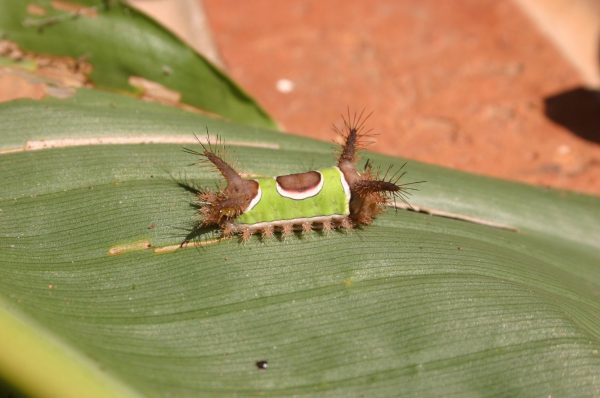Moths – Control
Few things are more disappointing than donning an expensive wool sweater, only to find that moths have been snacking on the threads for weeks. Reweaving is costly and patching is almost impossible. “If only I had checked on my clothes earlier”, you think. “Now they’re probably eating everything else in the closet!”
Although we imagine that winged creatures have done the damage to our clothing, it is actually the larvae of a particular moth that has enjoyed himself at your expense. They feed on wool, hair or feathers whenever they have access to them. Not only clothing, but also piano felts, brush bristles and carpets are moth food.
You might see the adult moths fluttering around a room but they avoid light and attempt to hide when they are disturbed. The moths that are attracted to light bulbs during the summer are not clothes moths. The adult clothes moth lays her eggs in an appropriate spot; the eggs may take a week or more to hatch. The moth larvae are white, less than one-half inch long and have a dark head.
In truth, the larvae can’t live on pure wool. They need proteins, mineral salts and vitamin B complex to complete their life cycle. Sweat, food crumbs or beverage stains provide just what a healthy moth larvae needs. That is why it is imperative to have all woolens and furs cleaned each spring before you store them at home.
EMPTY THE CLOSET Moths can damage animal-based products as well as synthetic fabrics if they are mixed with wool. If you find damaged clothing, your first step should be to empty your closet and clean the walls, floor and baseboard thoroughly. Use caulk to seal every crack and crevice you can find where mouldings and closet rods abut the walls. The closet should be airtight, except for the door, when you are finished.
CLEAN THE CLOTHES Moth cocoons and larvae are very delicate. Vigorous brushing around collars, cuffs and armpits removes and destroys moth eggs. That’s why the old ritual of household spring cleaning included hanging woolens outdoors and beating them with a metal beater. If you’d rather pay someone else to do the work, simply take all of your clothes to a drycleaner.
MOTH-PROOF BAGS If you won’t be wearing the clothing for several weeks, it’s a good idea to store it in special moth-proof bags. The larger drycleaning establishments can provide these for you. With clothes in the bag and a twist-tie around the hanger neck, moths can not reinfest your valuables.
Remember, mothballs and moth flakes must be used in a tightly closed container (NOT a closet) to be effective. Extreme caution should be used before breathing their vapors. Regular cleaning and tightly closed bags and chests are the best ways to deal with clothes moths.













